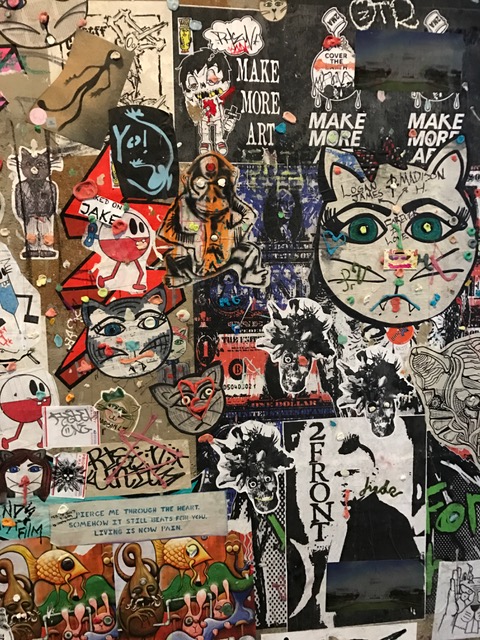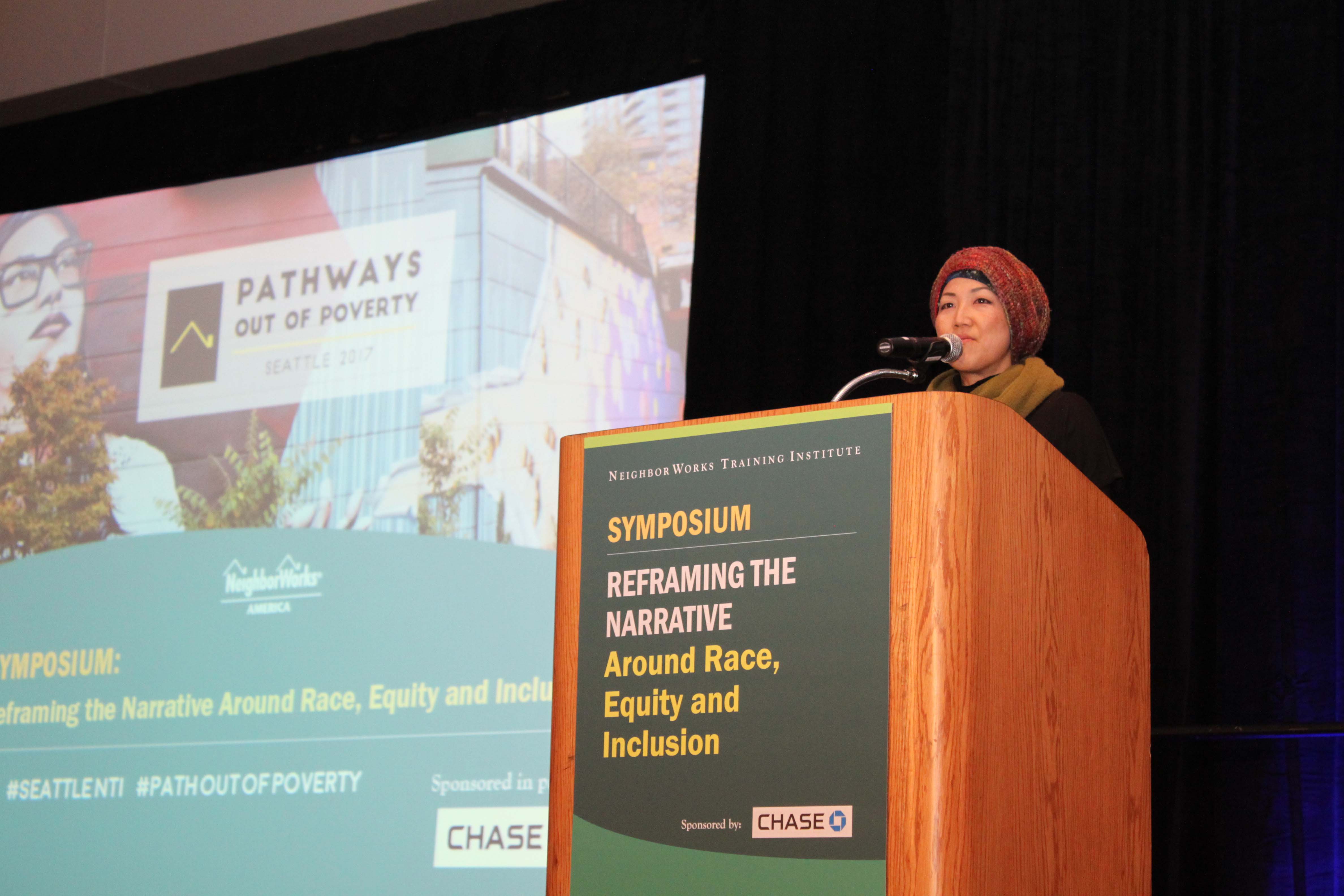Last week’s NeighborWorks Training Institute symposium, “Reframing the Narrative around Race, Equity and Inclusion,” was our second on the topic of race and inclusion and part of our ongoing initiative to identify concrete steps we can take to create a more just, equitable environment in our organizations and communities. Here are a few highlights from the expert presentations on how we all can listen to and leverage multiracial and multiethnic community voices to inform our policies, programs and practices.
‘Denmark, kangaroo, orange’

Yet, this question could have been answered many different ways. Countries that start with ‘D’ also include the Dominican Republic and the Democratic Republic of Congo. Other animals that begin with ‘K’ are kittens and koala bears. And finally, another fruit that starts with ‘o’ besides orange is olive (admittedly I had to Google this one). But these words aren’t often the first that come to mind. This fun, light-hearted exercise shows a common connection in thought among people of different colors and backgrounds. But, the dark side of this is the realization that we exclude a large number of possibilities in our thinking—a sort of metaphor for our tendency to generalize and stereotype.
What happens when people are asked about their role models? Chances are, they’ll name people from similar demographics. But think of the great role models we are leaving out. Whose perspective isn’t represented, and whose voices are we forgetting to include in this dialogue? Given that two-thirds of adults gather news from social media, it’s crucial to challenge ourselves to see beyond our networks and remind ourselves there is more than one side to every story.
Harris continued his discussion on why inclusion matters to everyone. Using bathrooms at a sports arena to illustrate the difference between equity and equality, Harris explained equality as when men and women have the same number of facilities. Equity, on the other hand, considers different factors, such as the fact that women take longer to use the bathroom than men, and also that women often are the ones who bring children with them. Why should men care about women’s bathrooms if they’re not the ones being directly affected? Harris pointed out that men often find themselves waiting for spouses, children and friends who are in line to use the women’s restroom, while the men’s restroom is filled with spare stalls. It’s a simple, yet widespread, example of why everyone should care about equity: It affects us all.
Value of the arts
The symposium agenda was packed with other speakers who addressed the issues of bias, representation and empowerment. My personal favorite was a session called “Arts and Culture for Inclusive Communities.”Traci Kato-Kiriyama, writer, actor and arts and culture consultant; Randy Engstrom, art director for the city of Seattle; and Beth Takekawa, executive director of the Wing Luke Museum, led an engaging discussion on the ways in which we are all artists and how art reflects and shapes our cultural understanding.

The discussion raised a question I hadn’t considered before: How can arts and culture be better integrated into a rural community, when people tend to flock to the big cities for museums and galleries? Participants agreed that residents must see arts and culture as a representation of their community and the people within it. Seattle, for example, has branded itself through its coffee, beginning when the first Starbucks opened in the city in 1971. Nationwide, it’s now known as the coffee capital of the United States, with coffee shops lined down Pike Street, and it has managed to turn its coffee brewing into an art. How can the same be done for rural areas? To be successful, a community must invest in the types of arts programs that mean something to the residents, promoting their heritage and identity and building pride.
Reflections and reactions
The day after the symposium, I had an opportunity to eat lunch with Traci Kato-Kiriyam. We observed that, at times during the symposium, there were moments of tension among participants. However, this was a good kind of tension: People were willing to discuss and delve deeper in the face of uncertainty and feelings of apprehension, which she referred to as “positive collective confrontation." For example, one participant had asked, “How do we have a debate/discussion on race and inclusion that doesn’t shut down both parties, so that folks can walk away without feeling/being attacked?” This is a discussion that requires active listening and respect for one another.NeighborWorks CEO Paul Weech made it clear early in the day that, “Diversity and inclusion are the opposite of us-versus-them.” Rinku Sen of Race Forward observed that to transform the way we talk about race, we should “focus on impact, not intention.” It’s up to each of us to think about and question our policies and practices, and their role in creating a fairer, more equitable world.
The symposium did not end with a sense of closure, but rather a drive to action. If they take up the charge, each of their communities may well benefit from the inclusion of new voices, new ideas and a better understanding of all their residents.

